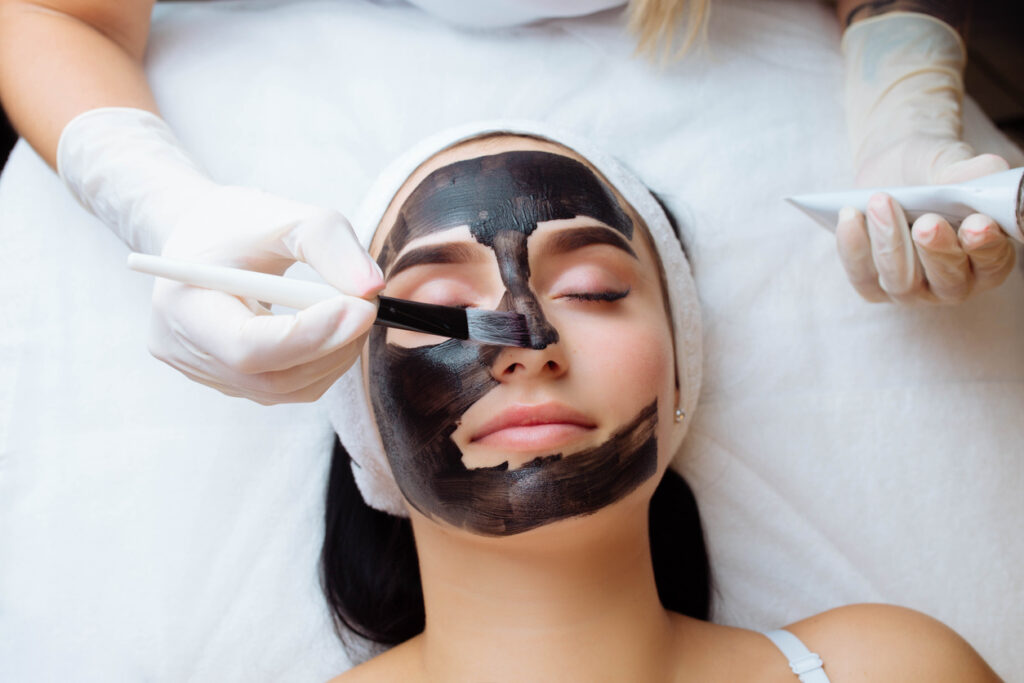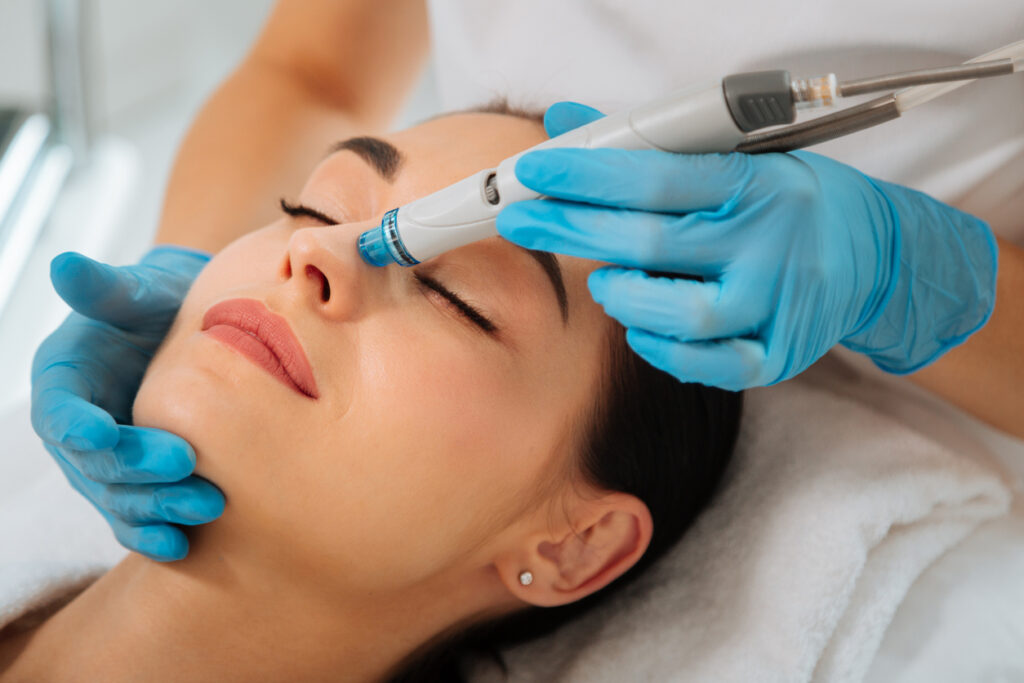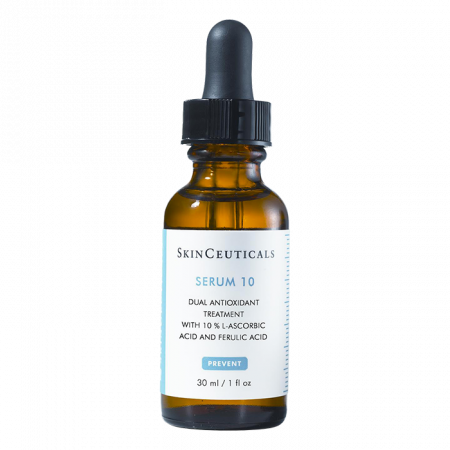Hyperpigmentation: How to Prevent & Treat Skin Pigmentation

Hyperpigmentation is the word we use to describe dark spots or brown patches on the skin. In Ireland, many of us fair skin girls will experience hyperpigmentation as freckles on our cheeks and noses, but it can range from small spots to large areas of darkened skin anywhere on the body.
Hyperpigmentation in skin is usually not dangerous, it’s more of a cosmetic issue causing uneven skin tone that you might want to fix. It can make skin look aged and dull, so we often try to combat it with brightening treatments to get that youthful glow back.
However, hyperpigmentation can signal underlying issues or medical conditions that may need to be addressed, so make sure to check out any unusual skin changes with your doctor before diving into beauty treatments!
If you’re looking to fade hyperpigmentation and get a nice even skin tone back, there are plenty of treatments you can use at home and at the beauty clinic. Here at Araya Beauty, we’ve seen real results from a number of our facials and treatments, giving happy clients a radiant glow that really lasts. Keep reading to find out more about hyperpigmentation and how to treat it.
What Causes Hyperpigmentation?
Hyperpigmentation is all about the production of melanin, which is the brown pigment in our skin. It’s the same pigment responsible for tanning, but hyperpigmentation occurs when our skin cells produce too much melanin. Here’s why that might happen:
Sun Damage
Excessive sun exposure is the number one cause of hyperpigmentation. As much as we may love a tan, too much sun without adequate protection is a recipe for skin damage.
Over time, exposure to UV rays causes oxidative stress and other reactions in the body that will impact the structure and strength of your skin. Initial sun exposure will lead to a tan or a sunburn, but as time goes by, continued exposure to the sun can lead to hyperpigmentation problems and even skin cancer.
Dark patches of skin – called sun spots, age spots, liver spots, or solar lentigines – appear due to the overproduction of melanin. This melanin builds up over time, and we get those persistent dark spots that just won’t budge.
Hormones
Hormonal hyperpigmentation is caused by hormonal changes in the body. This is most commonly related to pregnancy, hormone replacement therapy, and oral contraceptives. Estrogen and progesterone are two female sex hormones that impact melanocytes (pigment-producing cells) in the skin, and when those hormone levels are altered, our skin can react with dark pigmentation.
This type of hyperpigmentation is often called melasma. Melasma often appears as brown spots or patches over the face, and it’s sometimes referred to as the “mask of pregnancy.”
Inflammation
Another one of the main forms of hyperpigmentation is post-inflammatory hyperpigmentation. This is a darkening of the skin after skin injuries, generally caused by skin inflammation.
Dark patches of skin can appear where scars have healed. This is very common for people who have had acne, with acne scars sticking around as more permanent blemishes after the acne has cleared up. It can also happen with a mosquito bite or any other insect bite that can lead to skin inflammation or a skin infection.
Allergies in the skin like contact dermatitis can also lead to reddening and longer-term discolouration. Chronic skin conditions like eczema, psoriasis, and rosacea can lead to patches of thickened skin and pigmentation.
Medications
Certain medications, particularly chemotherapy drugs and antimalarial drugs, can increase your skin’s sensitivity to sunlight. Over time, this can lead to a build-up of unwanted pigmentation in the skin.
Other medications that can impact your sensitivity to UV damage when used for a long time include antibiotics, anti-inflammatories, anti-fungal medications, and antihistamines.
Natural Skin Color
Research suggests that people with skin of colour are more likely to experience hyperpigmentation. This is because people with darker skin types have more melanocytes (pigment-producing cells) in their bodies, which increases the chances of hyperpigmentation occurring.

The Best Skincare Products for Hyperpigmentation
The good news is that hyperpigmentation can be prevented and treated with some topical treatments. Here are some products and ingredients that you can add to your daily skincare routine to start fading those dark spots, stat!
Sun Protection
First things first, prevention is always going to be better than cure. Whether your pigmentation is mild or severe, it’s never too late to start protecting your skin from the sun.
A mineral sunscreen that contains titanium dioxide, zinc oxide, or iron oxide can form a physical barrier that prevents UV rays from damaging your skin. Chemical sunscreens can also be very effective at minimizing UV damage and preventing sun spots. We always recommend a broad-spectrum sunscreen with a sun protection factor of 50+ for the face.
Vitamin C
One of the best topical treatments to brighten skin and even out your skin tone is Vitamin C. Vitamin C is an anti-inflammatory and antioxidant ingredient, and it can actually inhibit melanin synthesis.
This makes it the perfect ingredient to add to your skincare routine if you struggle with pigmentation. Choose a vitamin C serum with a concentration up to 20%, which you should apply after cleansing and exfoliating your skin for the best results.
An at-home vitamin C serum might not fully correct heavy pigmentation, but it can certainly reduce and fade those pesky dark spots for a more radiant and even skin tone.
Exfoliating Acids
Exfoliating your skin with chemical exfoliants can really help to fade pigmentation build-up. Chemical exfoliants are acids, but they’re not as scary as they sound. These acids are gentle solutions that dissolve dead skin cells on the surface of your skin, and they’re actually less harsh than physical scrubs. They gently remove the surface layer of your skin and encourage new skin cells to form, leaving you with fresh and rejuvenated skin.
You can find these in strong facials known as chemical peels, but they’re also available in lighter concentrations in your skincare products. You’ll find exfoliating acids on skincare labels as AHAs (alpha hydroxy acids) and BHAs (beta hydroxy acids). The best acids to exfoliate and brighten your skin are glycolic acid, azelaic acid, kojic acid, and salicylic acid.
Professional Treatments for Hyperpigmentation
There are stronger options available from dermatologists and aestheticians for moderate to severe hyperpigmentation that won’t budge with home treatments. Here at Araya Beauty, these are the best treatments for hyperpigmentation we’ve found:
Carbon Laser Peel
The Carbon Laser Peel is one of the top hyperpigmentation treatments we have. It combines the best of both laser treatments and chemical peels to effectively fade stubborn pigmentation. It can be used on the face or on other areas of the body.
This is a non-invasive skincare treatment that combines a liquid carbon mask with pulsed laser therapy. It starts with a black carbon paste that we apply to the skin, and it sits for 20 minutes to draw out impurities from the skin. A pulsed laser is then used to break up the carbon, exfoliating and killing bacteria. The heat generated from laser treatments activates collagen production, tightening your skin and encouraging new skin cells to grow.
The result is smoother, fresher skin with fewer pigmentation issues – and fewer lines and wrinkles, too! A series of 2-6 treatments can help fade stubborn pigmentation for good.

HydraFacial
The HydraFacial is an exfoliating and hydrating facial that combines chemical peels, deep pore extraction, and nourishing serums to give your skin a seriously radiant glow.
The facial starts with a chemical peel, using glycolic and salicylic acid to gently remove that top layer of skin. We then use a medical grade suction device to simultaneously extract debris from your pores and infuse your skin with a hydrating and brightening serum.
Here at Araya Beauty, we can combine this with antioxidant and vitamin C serums to create a brightening, hydrating facial that will help reduce your pigmentation issues. We recommend one treatment per month to tackle stubborn pigmentation in skin.

OxyGeneo Facial
The OxyGeneo Facial is a revolutionary 3-in-1 facial that can exfoliate, infuse, and oxygenate your skin. It’s a non-invasive treatment option that’s great for even sensitive skin types.
For this treatment, we’ll apply a rich treatment gel to your skin. For hyperpigmentation, we can choose a gel with brightening ingredients like kojic acid, azelaic acid, or vitamin C. We’ll then buff and oxygenate your skin with the OxyGeneo device, for a plumper and more radiant glow.
Because this facial infuses your skin with brightening treatments while also bringing more oxygen to the surface of your skin, it can help freshen up your complexion and fade pigmentation over time.

We’re Here to Help
Here at Araya Beauty, we are a team of qualified and experienced aestheticians who can help you target your skin concerns head-on. If you’re still not sure which treatment is right for you, call us on +353 (01) 217 0594 or visit our salon today!


